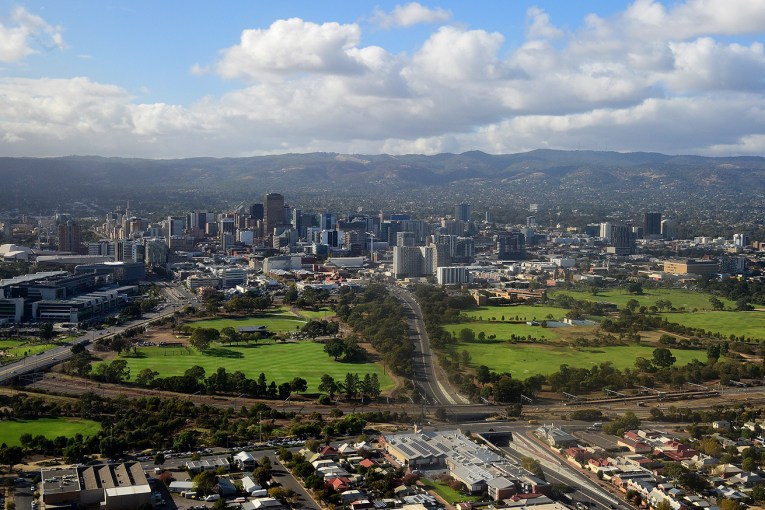Why the Aussie dollar is set to fall even further


A dollar would mean more expensive overseas travel, but potentially higher wages. Photo: AAP
The Australian dollar has been hit by a double whammy – a Donald Trump Twitter storm on China tariffs and the increasing prospect of interest rate cuts.
The dollar dipped under US70c on Monday, after Mr Trump tweeted that talks toward a trade deal with China were proceeding “too slowly”, and that he would hike tariffs on $US200 billion ($286 billion) worth of Chinese goods from 10 per cent to 25 per cent on Friday.
He also said he would target a further $US325 billion ($465 billion) of goods with 25 per cent tariffs “shortly”.
For 10 months, China has been paying Tariffs to the USA of 25% on 50 Billion Dollars of High Tech, and 10% on 200 Billion Dollars of other goods. These payments are partially responsible for our great economic results. The 10% will go up to 25% on Friday. 325 Billions Dollars….
— Donald J. Trump (@realDonaldTrump) May 5, 2019
….of additional goods sent to us by China remain untaxed, but will be shortly, at a rate of 25%. The Tariffs paid to the USA have had little impact on product cost, mostly borne by China. The Trade Deal with China continues, but too slowly, as they attempt to renegotiate. No!
— Donald J. Trump (@realDonaldTrump) May 5, 2019
The Twitter rant sent Asian markets tumbling and oil prices down, and ended the previous calm of markets that had shown some positive signs after growth in the China and the US economies.
The Wall Street Journal reported that China was considering cancelling trade talks scheduled for this week following Mr Trump’s threats.
All that tumult hit Australia’s market and the dollar.
The ASX200 finished the day down 0.82 per cent, while the dollar reached US69.84c on Monday. That’s down from US71.80c in mid-April, and down around 12 per cent from the US80c mark of early 2018.

Source: marketwatch.com
And thanks to a couple of other factors, that’s unlikely to be the end of the slide for the Australian dollar.
Not the end of the dollar dive
The Reserve Bank (RBA) is widely expected to cut the official cash rate by 25 basis points either at its meeting on Tuesday (May 7), or within the next couple of months. The likelihood of a cut has increased after inflation data released in April revealed a weak and stubborn economy.
The next rate cut would mark the first time in 32 months that the RBA has slashed rates.
Based on economic indicators, most market commentators and financial markets expect the RBA will cut rates a second time in 2019, which would mean further downward pressure on the Australian dollar.
And that’s precisely what the RBA wants, to make our exports – such as resources and agricultural produce – more competitive.
It would also make imports more expensive, theoretically boosting demand for domestic goods.
But there’s another factor that will create pressure on the dollar in 2019 – the diverging gap between interest rates in the US and in Australia.
As the ABC’s business editor Ian Verrender pointed out on Monday, interest rates in Australia have traditionally been higher than those in the US and most other developed nations.
But that has now changed, with US official rates last year climbing well above Australia’s, as the US economy surges and the Australian economy limps along.
“The gap between our interest rates and America’s will have a big impact on the currency. It’s what’s known as the spread,” Verrender explained.
“The wider it gets – in America’s favour – the weaker our dollar will become. That’s because investment funds looking for a decent return will scarper offshore in search of higher yields.”
While there’s pressure on the US’s Federal Reserve from Mr Trump and vice president Mike Pence to cut rates, Reserve chair Jerome H Powell doesn’t appear to be open to that idea in 2019.
“Our outlook, and my outlook, is a positive one, is a healthy one, for the US economy for the rest of this year,” Mr Powell said early this month.
And as our dollar falls, inflation should rise which, theoretically, means wages should finally follow.
-with AAP








